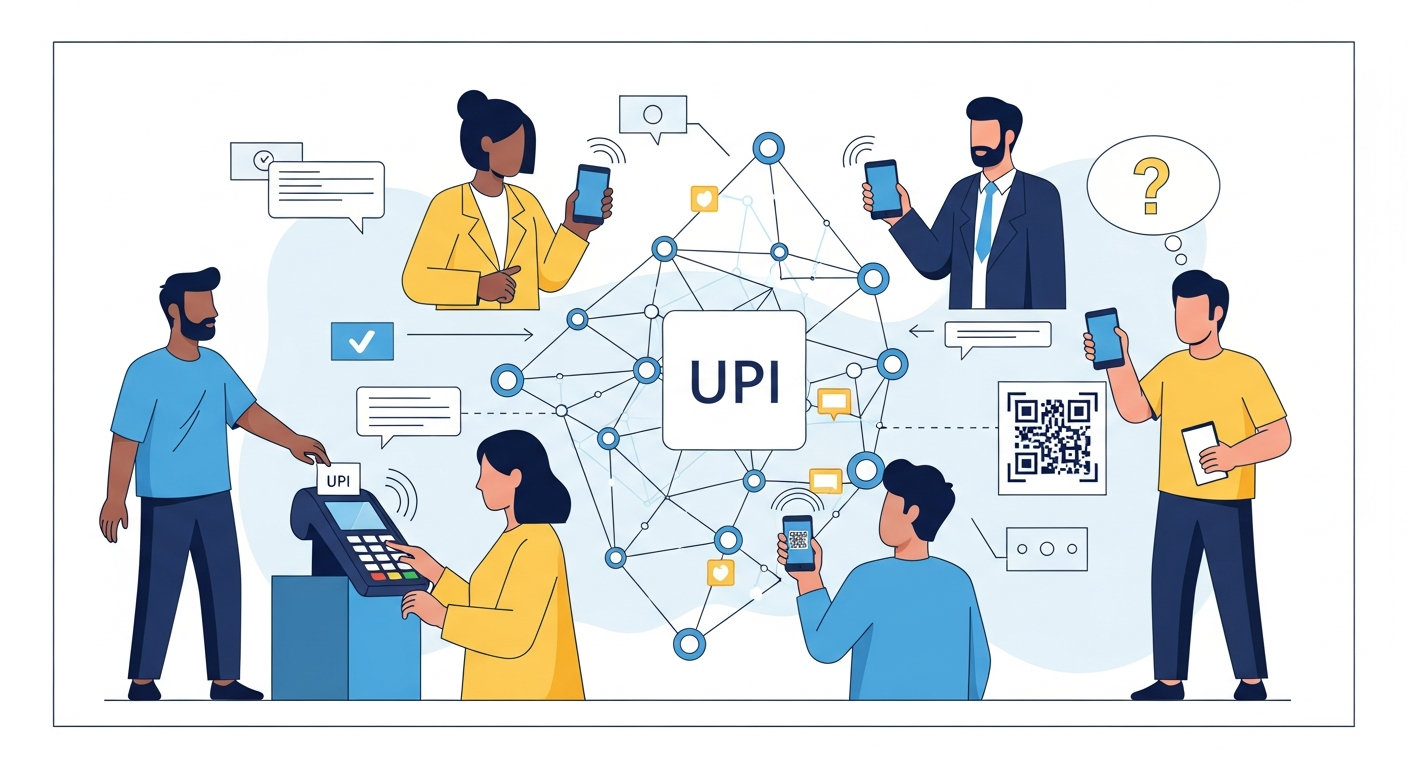What is UPI?
Unified Payments Interface (UPI) is a real-time payment system developed by the National Payments Corporation of India (NPCI). It allows users to link multiple bank accounts to a single mobile application, facilitating seamless fund transfers and various financial transactions. UPI has transformed the way people make payments in India, offering a simple, quick, and efficient way to send and receive money.
How UPI Works
UPI works by allowing users to make transactions directly from their bank accounts using a mobile device. You can send money to another user or pay for goods and services with just a few taps on your smartphone. The process is straightforward:
- Link Your Bank Account: You start by linking your bank account with a UPI-enabled mobile application.
- Create a UPI ID: This unique identifier allows you to receive payments without needing to share your bank account details.
- Initiate Transactions: To send or receive money, you simply enter the amount and the recipient’s UPI ID, then authorise the transaction using a PIN.
- Instant Transfer: Funds are transferred instantly, making it convenient for everyday transactions.
UPI APIs Explained
What is an API?
An Application Programming Interface (API) is a set of rules that allows different software applications to communicate with each other. In the context of UPI, APIs enable developers to integrate UPI payment solutions into their applications or websites. This means that businesses can offer UPI services directly to their customers without needing to build a payment system from scratch.
How UPI APIs Function
UPI APIs work by providing a standard way for applications to send and receive payment requests. When a user decides to make a payment through an application that uses UPI APIs, the following steps typically occur:
- Payment Request: The application sends a payment request to the UPI system through the API.
- User Authentication: The user is prompted to authenticate the transaction using their UPI PIN.
- Transaction Processing: Once authenticated, the UPI system processes the transaction by communicating with the relevant banks.
- Confirmation: After the transaction is completed, a confirmation is sent back to the application, notifying the user of the successful payment.
Benefits of UPI APIs
Enhancing Payment Solutions
Integrating UPI APIs into your business can significantly enhance your payment solutions. You can offer a fast and secure method for customers to pay for products or services. This convenience can lead to increased sales and customer satisfaction.
Streamlining Transactions
UPI APIs help streamline the payment process. With instant fund transfers, customers do not have to wait for payments to clear. This quick turnaround can improve cash flow for businesses and create a more efficient transaction experience for customers.
Accessing UPI APIs
Who Can Use UPI APIs?
UPI APIs are available for various stakeholders, including:
- Businesses: Retailers and service providers can integrate UPI APIs to facilitate payments.
- Developers: Software developers can create applications that incorporate UPI payment features.
- Financial Institutions: Banks and fintech companies can use UPI APIs to enhance their service offerings.
Steps to Integrate UPI APIs
Integrating UPI APIs into your application involves several key steps:
- Register with NPCI: Begin by registering your business with the National Payments Corporation of India.
- Obtain API Documentation: Access the technical documentation that outlines how to use the UPI APIs.
- Develop Your Application: Build or modify your application to include UPI payment features.
- Testing: Conduct thorough testing to ensure that the integration works smoothly.
- Go Live: Once testing is successful, you can launch your application with UPI payment functionality.
Security Measures in UPI APIs
Importance of Security
Security is a critical aspect of any payment system, and UPI is no exception. As UPI APIs handle sensitive financial information, robust security measures are essential to protect users from fraud and cyber threats.
Security Features of UPI APIs
UPI APIs come with several security features, including:
- Two-Factor Authentication: This adds an extra layer of security by requiring users to verify their identity through multiple methods.
- Encryption: Data transmitted through UPI APIs is encrypted, making it difficult for unauthorised parties to access sensitive information.
- Fraud Detection Systems: UPI systems are equipped with advanced fraud detection mechanisms to identify and prevent suspicious activities.
Future of UPI and Its APIs
Trends in Digital Payments
The digital payments landscape is constantly evolving, with UPI leading the charge in India. As more consumers and businesses adopt digital payment methods, the demand for UPI APIs is expected to grow. This trend is driven by the increasing smartphone penetration and the push for a cashless economy.
Potential Developments in UPI APIs
Future developments in UPI APIs may include:
- Enhanced Features: New functionalities may be introduced to improve user experience and security.
- Broader Integration: UPI APIs may become available for more types of businesses, expanding their reach and usability.
- International Expansion: There is potential for UPI to expand beyond India, allowing for cross-border transactions and greater financial inclusion.
In conclusion, UPI and its APIs are paving the way for a more efficient and secure digital payment ecosystem. By understanding how UPI works and the benefits of its APIs, you can better navigate the future of digital transactions.



